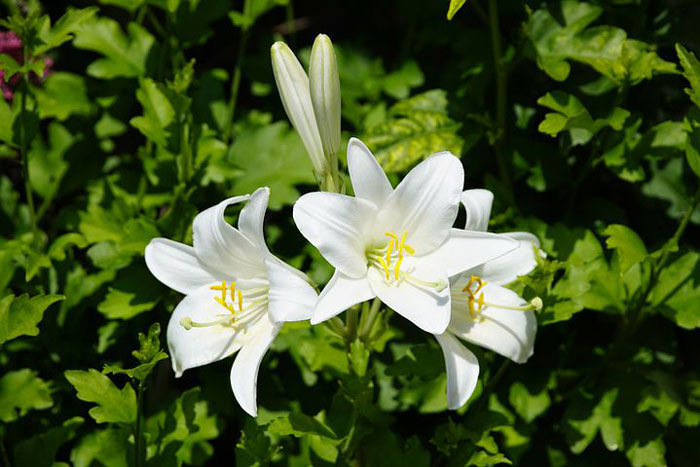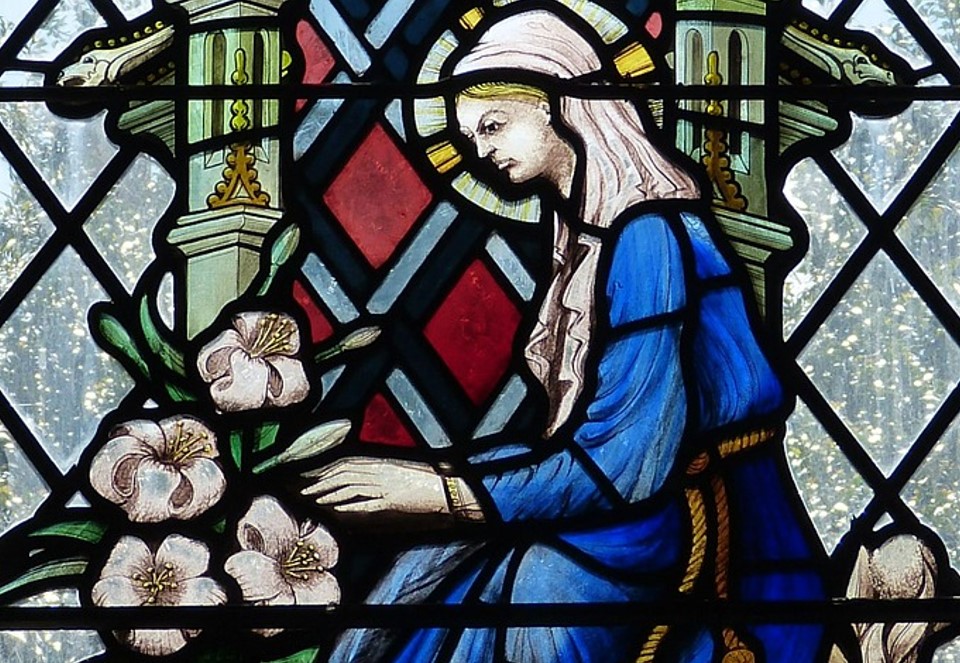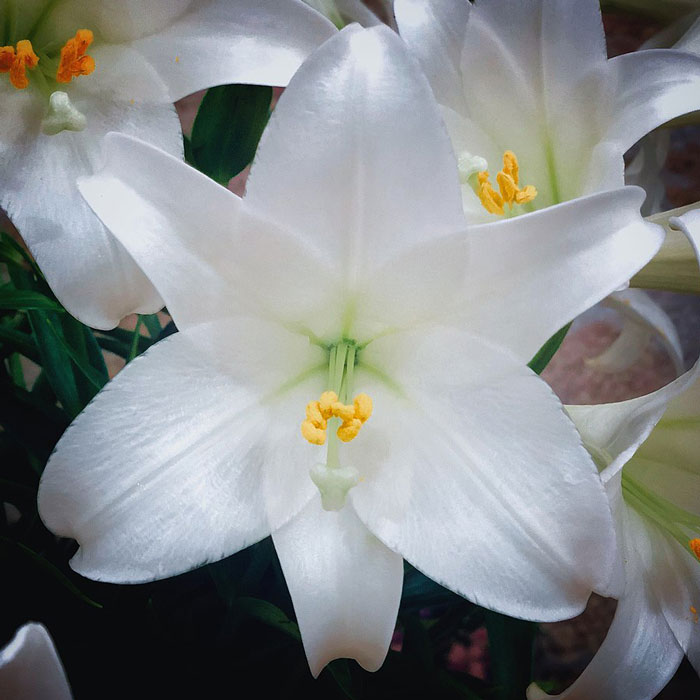Taking an environmentally sensitive approach to pest management
Madonna Lily: Beauty through the Ages
Published: August 5, 2020
"O radiant Lily, how with the paltry art of my sober muse. Can I bring you worthy praise in song and verse? Your shimmering white is the reflection of snowy lustre, The sweet scent of your bloom a reminder of the woods of Sheba." – Walahfrid Strabo, 827 A.D.
The reverent words of Benedictine monk Walahfrid Strabo are reflective both of the esteem given to Madonna lily as well as its longevity as a garden flower. Few other garden perennials deserve the title "heirloom" as much as Madonna lily. Many historians believe it is the first plant to have been cultivated by humans for ornamental purposes, although later it was used for its medicinal properties as well. August is an ideal month for planting this iconic beauty and a good time to explore it in greater detail.

Madonna lily, sometimes referred to as St. Anthony's lily, carries the scientific name of Lilium candidum. It should not be confused with Easter lily (Lilium longiflorum) whose flowers are somewhat similar in appearance. As its scientific name suggests, Madonna lily is a member of the Liliaceae plant family and thought to be native to the Balkins and Middle East. Its flowers are depicted on paintings made by the Minoic people, a Bronze Age civilization which inhabited the island of Crete as well as other Aegean Islands. Because of its early cultivation, it can be found naturalized over much of southern Europe, Ukraine, North Africa, the Canary Islands and even into the New World.
As mentioned above, later in its cultivation, Madonna lily was used for its medicinal properties as well as for its ornamental appeal. The Egyptians crushed the bulbs of Madonna lily and used the ointment as a treatment for inflammation, burns and tumors. Later, Greek physician and herbalist Dioscurides reportedly used it to treat diseases of women. Roman naturalist Pliny the Elder continued its use for the purpose. Additionally, Romans are said to have used the extract of steeped Madonna lily bulbs to care for sore feet.
Additional to its aesthetic and medicinal use, Madonna lily held a special place in spiritual symbolism. The Roman Catholic church has long considered the lily as a symbol of purity. Medieval artworks often depict the Virgin Mary holding, or near, flowers of what, undoubtedly, is Lilium candidum. Clovis I, king of the Franks, upon his conversion to Christianity, is said to have been given a lily from heaven by the Virgin Mary. In France, today, lilies still symbolize power derived from God. Indeed, the fleur-de-lis (literally "lily flower") emblem widely used in French architecture, heraldry, etc. is thought to be a stylized lily.

As mentioned earlier, Madonna lily should be planted in August or early September. Choose a sunny location that receives six or more hours of direct sun each day. Planting depth is very important. Madonna lily is one of the few lilies that must not be planted too deeply. In contrast with other lilies which develop "stem roots" and are planted four to six inches deep, Madonna lily should have no more than one inch of soil covering its bulb. Water well after planting to encourage root development and subsequent rosette formation.
Madonna lily grows best in nearly neutral to slightly alkaline soil. Therefore, in most Missouri soils, ground limestone should be added at planting time. Also, in contrast to most garden lilies, it produces rosette of leaves in the fall that are maintained throughout the winter. Late in the following spring, a single flower stalk (spike) 24 to 60 inches in height emerges from this rosette of leaves. Spikes may hold from three to twelve elegant, pure-white flowers with exquisite fragrance.

Although strikingly beautiful and steeped with history, Madonna lily does have its challenges as a garden plant. This is largely due to its susceptibility to several virus diseases, including lily mosaic and cucumber mosaic. Control of these diseases is very difficult, since they are spread by insects such as leafhoppers which feed on the leaves of plants. Virus symptoms are not always clearly visible, but most often appear as chlorotic mottling of the leaves along with weak growth and eventual death of the plant.
In addition to its virus problems, Madonna lily also is quite susceptible to botrytis, a fungal disease that favors moderate temperatures along with high relative humidity. There are several fungicides available that are labeled for botrytis control on ornamentals. Unfortunately, some of the newer, more effective compounds are not marketed in "homeowner-sized" packages. An exception is cholorthalonil which is available under several brand names. Additionally, a sulfur dust on bulbs before planting may help to prevent infection from any surface wounds that might have occurred during handling.
Lilies of all types, and Madonna lily in particular, are susceptible to root rots. Therefore, excellent soil drainage (both internal and external) is necessary for a planting to be successful. Incorporating about four inches of aged compost or manure several weeks before plant helps tight soils to drain better. Raised beds can be considered in areas where drainage is a problem even after incorporating organic matter. Additionally, cool soil is important for lilies to thrive. A heavy organic mulch to cover the bed is helpful to lily bulbs during the heat of midsummer.
Because of past difficulties in finding virus-free bulbs, Madonna lily is in great demand. Disease-free strains are now available, although some gardeners (with appropriate patience) opt to start this plant from seeds, since the latter normally do not contain viruses. Although there are other very attractive lilies that are more disease resistant and easier to grow, none match Madonna lily's symbolic importance as a garden flower.
Finally, as a word of caution, Madonna lily contains a compound that is very toxic to cats. The toxin, which (evidently) only affects cats, has yet to be identified. Ingestion of the plant or its parts by cats often is fatal. Additionally, cats who visit a garden containing Madonna lily and brush against its flowers may collect pollen on their coats that can cause health problems when the cats groom themselves.
Subscribe to receive similar articles sent directly to your inbox!
- Madonna Lily: Beauty through the Ages (08/05/20)
REVISED: August 5, 2020